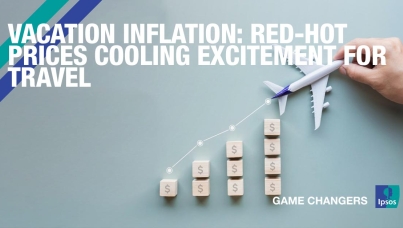CSM & M: Customer Satisfaction Measurement and Management
There's an old saying: "You can't manage what you don't measure." Logical enough. Unfortunately, a corollary is often assumed: "If we measure, it will be managed." Wrong!
I spoke at an American Society for Quality meeting at the end of 2003. The ASQ is a wonderful association, initially organized by quality experts--those folks who reverently guard the quality of our manufacturing (and service) production. ASQ conferences usually focus on issues of measurement and issues of determining the source of errors and problems. As one who measures attitudes and formulates management strategies I have often felt on the periphery of their discussions. On this particular occasion, however, a grass roots movement pervading many of the ASQ speakers' presentations blew me away. Several speakers were advocating not simply measuring customer satisfaction but managing it as well. They labeled it CSM & M (customer satisfaction measurement and management), in acknowledgement that measurement alone is not enough and that their responsibilities potentially extended to management of satisfaction and loyalty.
Well, about a year has gone by and it may come as no surprise that increasingly the projects Ipsos Loyalty is asked to bid on don't stop at measurement; requests for proposals for satisfaction and loyalty programs are beginning to require a management component. This is a healthy perspective. We all know of a satisfaction program that has been discontinued because no resulting benefit was perceived--the program was probably guilty of measurement devoid of management. With a management component addressed to remedying the discovered problems, the program might have shown value and survived.
The new CSM & M perspective challenges the satisfaction and loyalty expert to extend his or her skill set from attitude surveyor to diagnostician, process improver, and trainer/coach. Ipsos Loyalty's six-step model for satisfaction and loyalty engagements, which it has employed for the last ten years, has always incorporated these additional needs.
Discovery
Preparing the organization for change (through customer feedback--a concept which should be understood in most organizations but may nevertheless require some preparation) and identifying the key drivers of product or service attributes.
Design
Creating the survey instrument (questionnaire) and the survey methodology, including specifying the modality of the interview.
Delivery
Conducting the survey to determine how well the product or service is delivering on its promises and meeting customers' expectations and/or to determine the drivers of loyalty. Analyzing the findings (both numeric and verbal).
Discourse
Discussing the results of the survey internally with those who own the processes indicated by the findings and who will be responsible for improvements.
Direction
Prioritizing improvement opportunities. Setting goals for improvement using the results of the survey and other quality improvement tools (fishbone charts, house of quality, etc.). Challenging process owners with improvement dates and goals (to be monitored by future waves of the survey). Creating appropriate strategies and tactics.
Decisions
Monitoring how the strategies, tactics, and improvement initiatives affect customer behaviors (decisions). This observation helps estimate return on investment for the satisfaction/loyalty initiative. (Increasingly, marketing-related expenditures are being judged in the boardroom by their ability to demonstrate payback. All loyalty and satisfaction programs need to have a built-in ROI component.)
Understanding the expanded role implied by CSM & M is one thing; implementing it is another. Not many corporate managers trained in the fields of measurement and survey methodology are adaptable enough to acquire the additional skills of process improvement and training. And let's not overlook the accompanying need of information dissemination and proselytizing. For those corporate managers and departments that have the abilities to adapt, this trend offers expanded opportunities and responsibilities. For those unable or strategically unwilling to adopt these skills, there is the option of partnering with consultants (internal or external) to service these needs. Either way the resulting satisfaction or loyalty program will be stronger for having extended its scope.
A word to the wise? The next time you're reviewing the stages of your satisfaction or loyalty program, look to see if you're completing your chain with a management component following your measurement and analysis phases.



